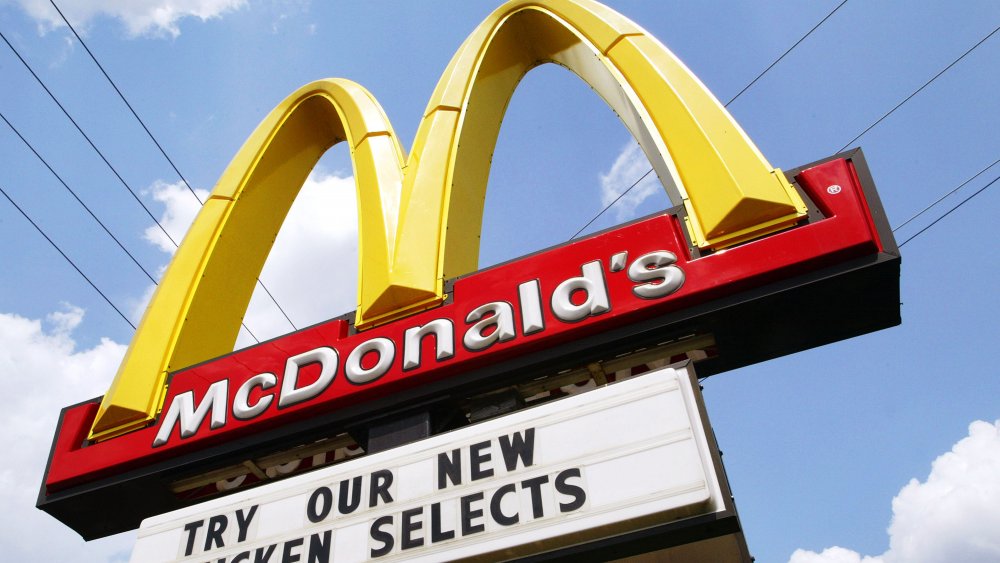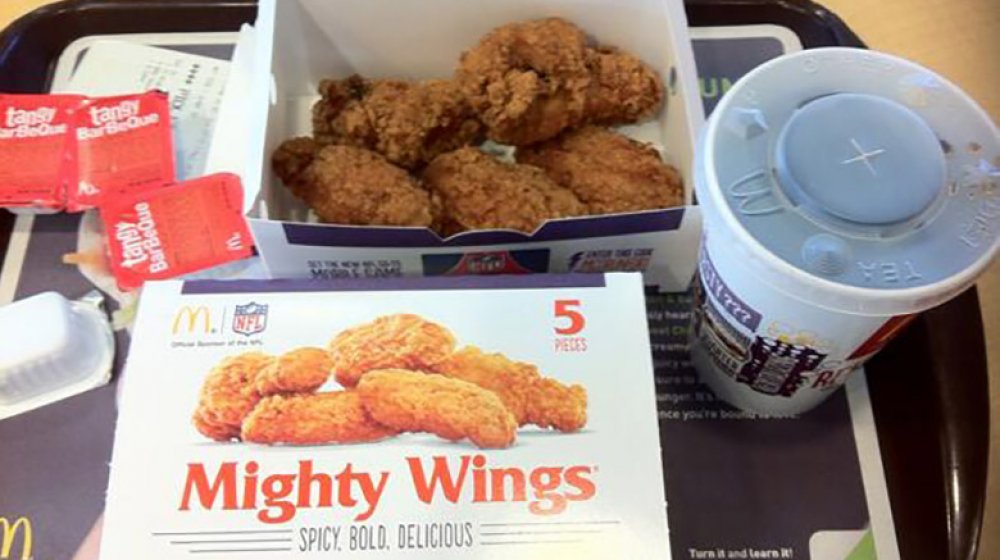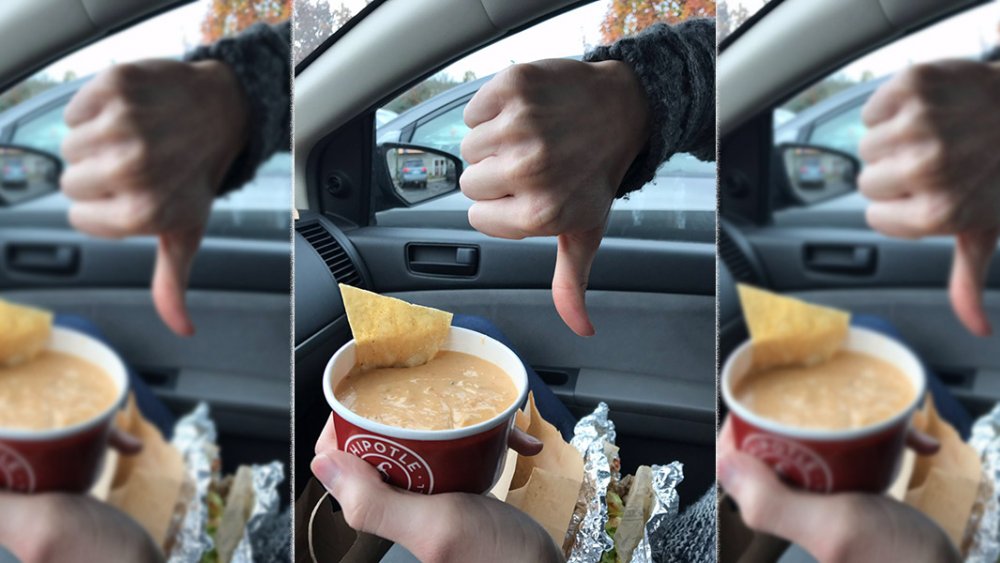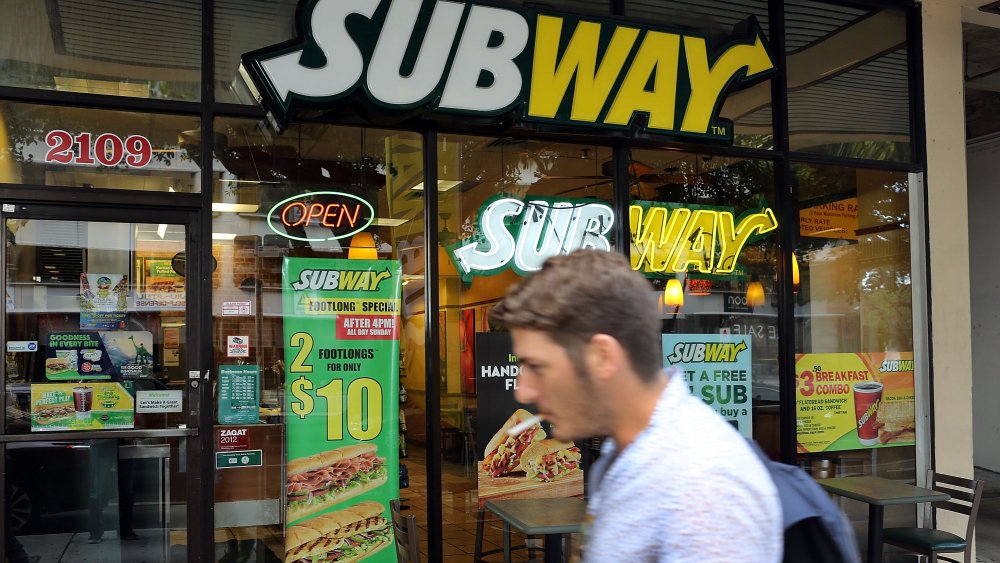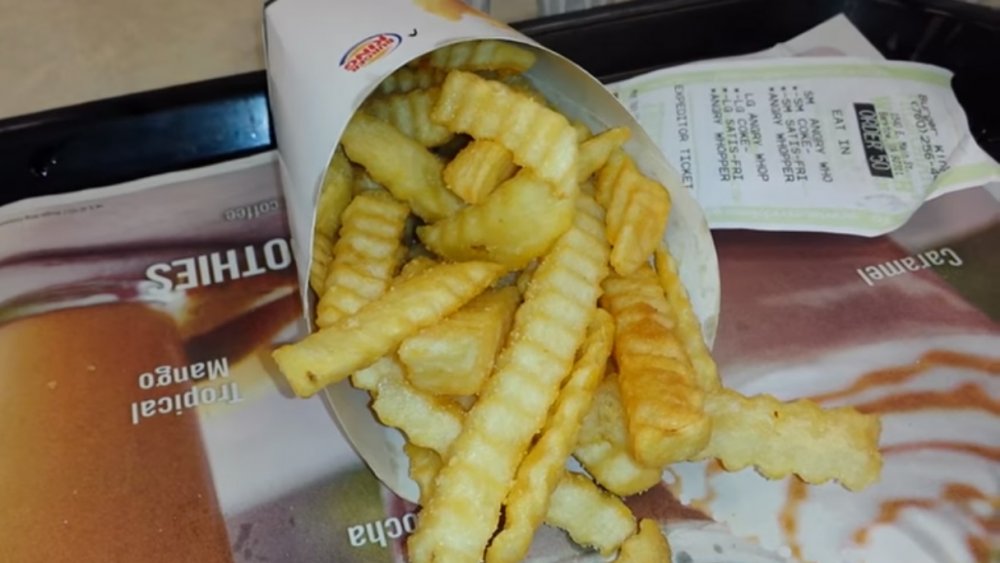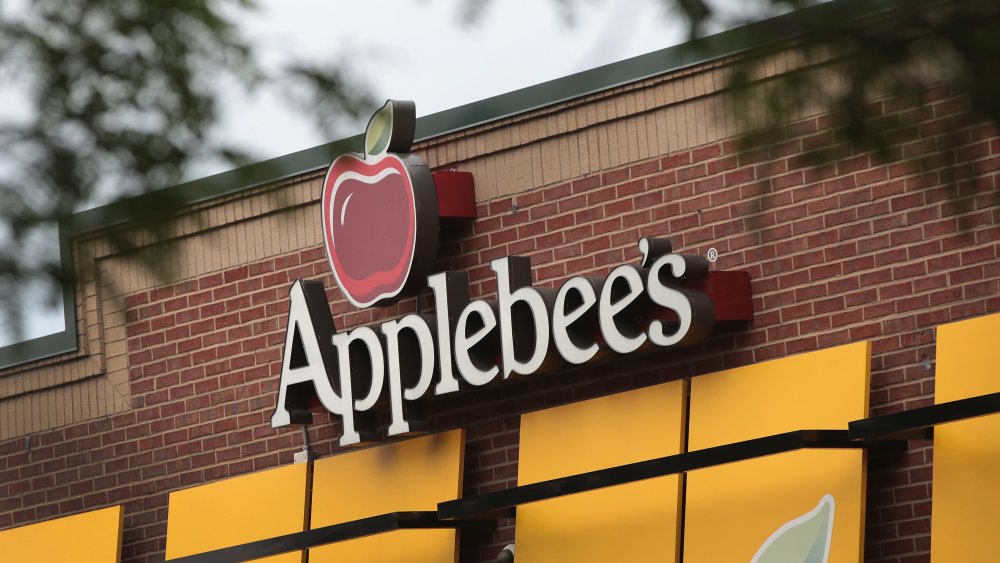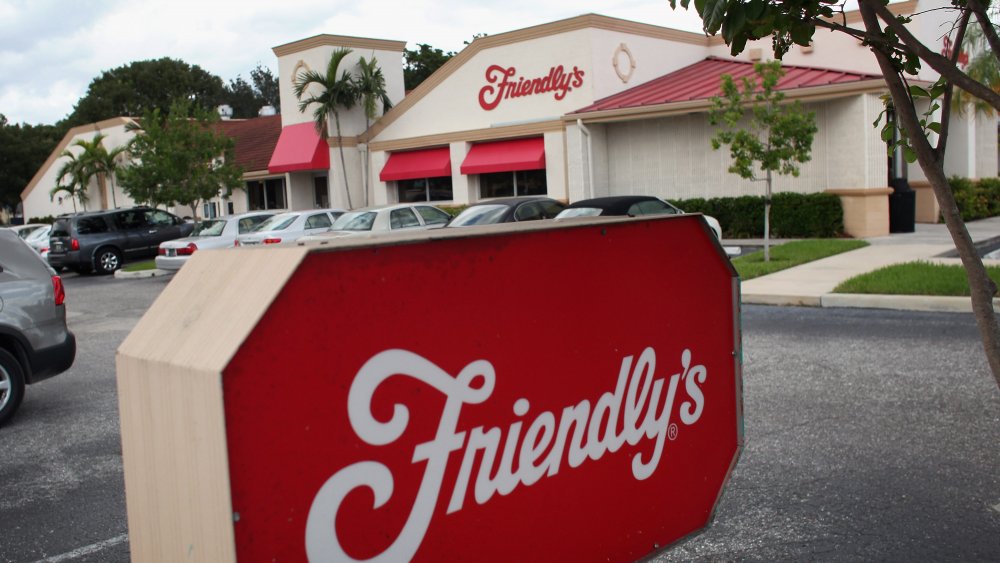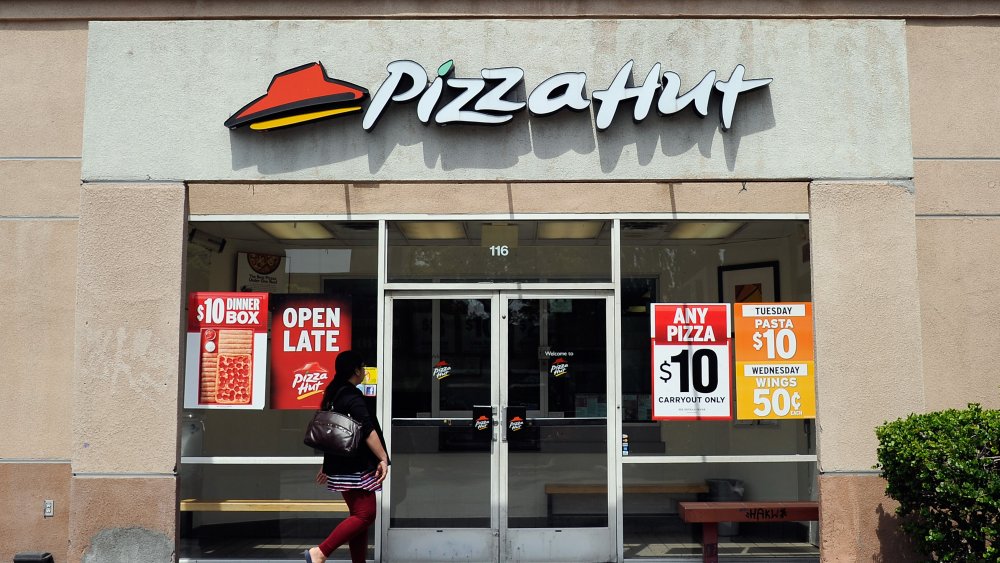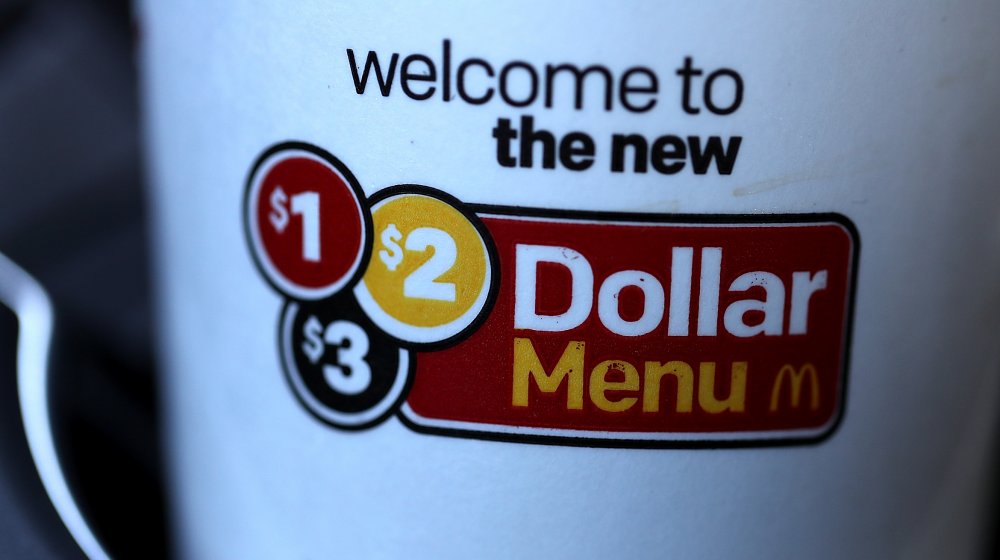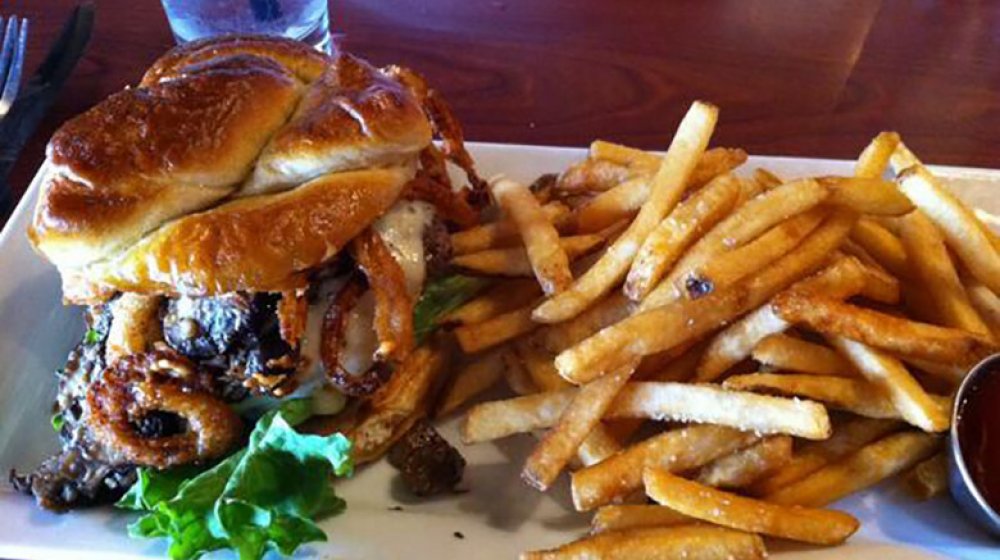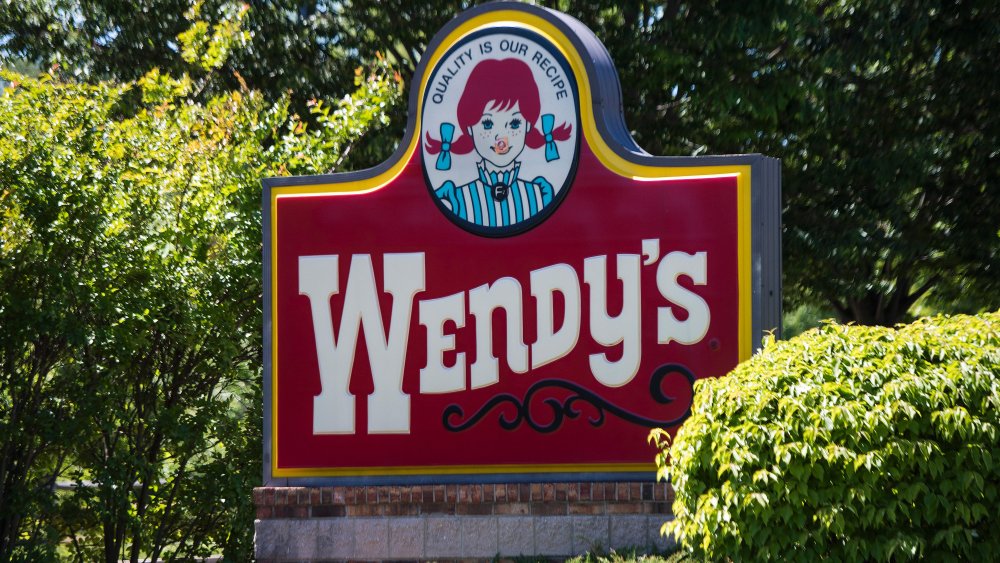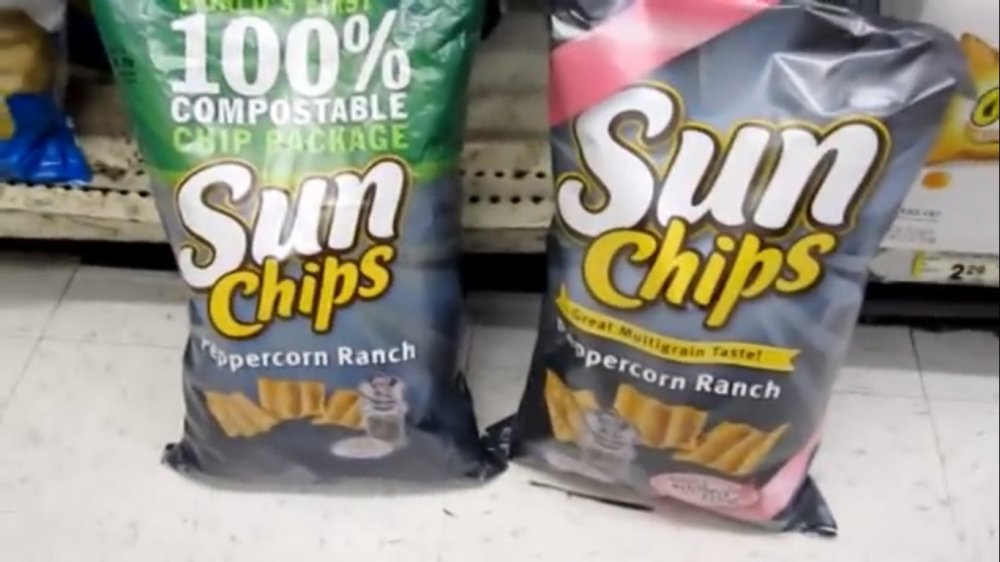The Most Expensive Food Failures Of This Past Decade
Restaurants and food companies are constantly tweaking their products and marketing tactics in hopes of generating as many sales as possible. Sometimes this works, like with the phenomenal success of Popeye's chicken sandwich or the longstanding McDonald's favorite, the McGriddle.
Other times, what consumers get is something terrible like the Taco Bell seafood salad. Who thought that would be a good idea?
Each decade has its own wins and losses, and the 2010s were no different. Some restaurants started the decade on a rough note, and poor strategy led to them ending it in even worse shape. Other brands made their mistakes, but have managed to right the ship back on course.
Whether it was trying too hard to appeal to the much-desired millennial customer, or banking on a single menu item giving them a competitive edge, all of these mistakes have one thing in common — money.
These brands hoped that their strategies would net them higher profits and a wider customer base (and spent big bucks to make it happen), but they often ended up on the opposite side of the coin. Sales declined, customer traffic dwindled, and investors were left scratching their heads and pondering what went wrong.
McDonald's Mighty Wings didn't sell
McDonald's is by no means a stranger to menu items that went down in flames. We all remember their attempt at pizza, right? Well, we can add to that list McDonald's venture into the wing business with the great Mighty Wing flop of 2013.
When the Mighty Wings launched, they were instantly criticized for being too spicy and too expensive. Three wings for $2.99 is hardly the sort of bargain that McDonald's Dollar Menu-savvy customers were accustomed to (via CBS News). Then-CEO Don Thompson said that the company could perhaps improve upon the price of Mighty Wings and admitted that they were "slightly spicy for some consumers."
What really hurt McDonald's regarding their hot wings was that they simply bought too many. The company estimated that they could move 35 million pounds of them, but bought 50 million pounds instead. The result was a costly surplus of wings that nobody wanted, and McDonald's had to absorb the blow of their mistake.
"Mighty Wings are proving once again that we can't sell premium items in large numbers because we still have the Dollar Menu," one disgruntled franchisee said.
Perhaps McDonald's should stick to boneless chicken and leave the real wings to somebody else.
Chipotle's queso didn't turn things around
Burrito joint Chipotle started out the 2010s with incredible growth that quickly made it one of the country's most successful fast-casual dining chains.
The past several years, however, have been rough for Chipotle, as it's dealt with numerous food poisoning nightmares, as well as one menu item that received dismal reviews after much anticipation.
That item would, of course, be Chipotle's attempt at queso — that delicious Tex-Mex cheese dip that goes so well with tortilla chips. In 2015, the food poisoning fiasco hit Chipotle and their sales took an understandable hit. The company was banking on its 2017 queso launch to help turn things around, but that didn't happen and social media pretty much hated the stuff (via Forbes).
"Chipotle's earnings power remains volatile as new initiatives like queso prove to be less incremental than expected," industry analyst David Palmer said at the time.
According to Restaurant Business, by the end of 2017, the chain was still losing customers, and same-store sales had declined a cumulative 15 percent over the course of two years.
The company did tweak the queso after the negative feedback, but even as late as August of 2019, Chipotle is still trying to figure out how to make their melted cheese dip more appetizing (via CNBC).
Nobody wanted Subway's breakfast
In terms of sandwich fast food chains, no other brand has come close to Subway's hoagie dominance. They've seen competitors like Quiznos and Blimpie's fade into the background and in 2018, had even more locations than McDonald's.
Overexpansion and the curse of the $5 footlong have hurt the company in recent years, leading Subway to scramble for new ways to keep people coming through its doors (via Restaurant Business). One of those strategies was by venturing into breakfast. It was a decision that didn't go over well with the public or franchise operators.
Subway put a lot of marketing into their breakfast sandwiches, but quickly found out that people didn't think of Subway for their first meal of the day. One study found that 43 percent of its customers didn't consider it a breakfast option, and another 19 percent weren't even aware that Subway offered breakfast.
Meanwhile, Taco Bell was adding even more competition to an already tough breakfast market and McDonald's was expanding its breakfast offerings all day. Subway kept breakfast on its menu for eight years, even as its number of units continued to plummet (via QSR Magazine).
At best, Subway's breakfast was a "regional success" and while franchises had the option to continue with it, the national experiment was largely a failure and rolled back in 2018 following an overall decline of 25 percent in sales traffic.
Burger King's Satisfries just weren't satisfying
Next to the burger, french fries are probably the number one thing that comes to mind when people think of fast food. Nobody expects fries to be healthy, after all, they are just deep-fried potatoes, but Burger King wanted to change the french fry anyway.
In 2013, Burger King set out to try and fix what wasn't broken by making a healthier french fry dubbed Satisfries. The fries were made to absorb less oil during the frying process and while they were somewhat healthier, they also were more expensive (via Los Angeles Times). A small order of Satisfries was around 30 cents more than a normal fry, and that was enough to turn customers off.
Burger King's goal was to ultimately try to compete with healthier options like Chipotle, but the healthier french fry was ultimately a failure with poor sales (via The Motley Fool). Franchises were given the option of continuing to carry Satisfries, but only around a third of restaurants chose to do so. Satisfries, of course, are now long gone and their story proves that some foods are better left alone — even if they're not particularly healthy.
Applebee's millennial makeover went nowhere
It wasn't just fast food chains that made bad decisions that failed to grow their profits and ended up costing them money in the long run. Casual dining restaurants had their share of woes this decade, too. One chain that has certainly found itself at the forefront of casual dining's demise and struggle has been Applebee's.
Like just about every other mainstream brand, Applebee's set its sights on millennials during the 2010s. Making the chain hip and relevant to millennials, rather than a 1990s relic, proved easier said than done though.
According to The Street, Applebee's was guilty of trying too hard to make itself into a post-work happy hour hangout for 20-somethings. Part of this effort meant ditching longtime favorites like riblets, in favor of a more refined menu that would appeal to Brooklyn hipster foodies. It didn't work. "If anything, people can spot a fake a mile away," industry analyst Stephen Anderson said.
Not only was it a swing and a miss with the cool kids, but it turned off the folks who were already happy with the old Applebee's. In 2017 Applebee's closed almost 100 restaurants and even more were slated to shut down in 2018 because of declining sales (via Fortune).
It was only after Applebee's stopped the poser antics and settled back into being its not-so-cool-but-familiar-and-comfy self that sales finally started to climb back up (via Business Insider).
Friendly's grilled cheeseburger melt was overkill
Beloved American diner and ice cream shop Friendly's has seriously struggled over the last decade, and is at risk of closing in 2020. One menu item that definitely didn't help bring people flooding through its doors was the grilled cheeseburger melt it launched in 2010.
The burger got publicity upon its launch, but for all the wrong reasons. A monstrous burger wedged between two grilled cheese sandwiches, health advocates quickly took issue with its 1500 calories, 97 grams of fat, and hefty 2,090 milligrams of sodium. The executive director of the Center for Science in the Public Interest, Dr. Michael Jacobson, said "It's not the kind of thing people should be eating" and even called it "deadly."
As for how the burger was received by the general public, well, it didn't help in turning things around for Friendly's. Just a year after the burger's release, Friendly's filed for bankruptcy and suffered a 5.3 percent drop in restaurant sales.
A burger stuffed between two grilled cheese sandwiches may have simply been too much, and you won't find it anywhere on their current menu.
Pizza Hut's specialty pizzas disappointed
Just like Applebee's, Pizza Hut also placed all of its focus on the millennial customer. Rather than embracing technology like its competitor Domino's, Pizza Hut decided a better strategy was to launch specialty pizzas that were as far away from things like the stuffed crust pizza as possible.
Among those pizzas were the Garden Party pizza — a pizza topped with spinach and roma tomatoes — and Sweet Sriracha Dynamite — honey Sriracha sauce with grilled chicken, jalapeños, pineapple, and cherry tomatoes (via Gizmodo).
While some reviews said the pizzas failed at their artisanal angle, but were still tasty, others said the pizzas reminded them of "cold Chinese food" and were only good "in theory." Not exactly the sort of thing to turn around a struggling pizza chain.
"We obviously have not been happy with the performance of the relaunch of Pizza Hut," Greg Creed, Yum brands CEO told Nation's Restaurant News. The result was flat same-store sales growth and a two percent operating profit decline by mid-2015. Creed said that while the pizzas marked a new chapter for the brand's variety of offerings, they failed to address the "need to balance its appeal to millennials with mainstream pizza customers." Translation: they didn't sell very well.
The specialty pizzas tanked when it came to boosting sales, and even three years after the revamped menu, Pizza Hut was still struggling to rebound financially from its millennial misstep.
McDonald's pricier dollar menu backfired
It used to be that the McDonald's Dollar Menu had only items that were priced at $1. It wasn't necessarily a favorite of franchise owners, but customers were lovin' it. A dollar just doesn't stretch the way it used to, and the Dollar Menu proved to be unsustainable as just a one dollar enterprise.
McDonald's took it away, but when they finally brought it back it wasn't the same Dollar Menu that McDonald's fans knew and loved. Something was different — the prices. It was now the $1 $2 $3 Dollar Menu, and it proved to be pretty disappointing for both the company and customers. When it relaunched in early 2018, a sausage burrito and a large drink were still just a buck, but items like a McGriddle or Triple Cheeseburger were two to three dollars.
What resulted was reportedly the largest one-day stock decline in McDonald's history (via Inc.). Ouch. The new Dollar Menu was supposed to boost sagging sales and instead, the opposite happened. One analyst for RBC Capital Markets summed things up, saying it lacked a "hero item" that would connect with customers.
In order to buck the menu mistake, McDonald's gave its franchisees more control over their restaurant's participation in the new Dollar Menu in late 2018. This, however, meant that the Dollar Menu could look completely different in one McDonald's versus another, and this has led to some rather confused and unhappy customers (via Today).
Ruby Tuesday's pretzel burgers weren't a magic wand
Just like Friendly's, Ruby Tuesday is another casual dining chain that is in for an uphill climb in 2020. While there are numerous reasons that Ruby Tuesday is disappearing, some of the items on its menu haven't helped matters.
In 2013, the chain rolled out a new menu, with the star items being four different pretzel bun burgers (via Huffington Post). The company pushed the new menu items with a six week TV advertising campaign that was aimed at boosting Ruby Tuesday's traffic. Unfortunately, the moderately-priced burgers failed to do much good, and largely didn't create a whole lot of fanfare.
Ruby Tuesday's then-CEO, James J. Buettgen, called the results of the new menu "disappointing" and not reflective of what the brand hoped for with its repositioning strategy. Not only was Ruby Tuesday getting fewer guests in the door, but those guests were spending less too.
Franchised locations reported a more than eight percent in a sales decline that year, which didn't help the company's net income drop of $22.2 million during the first fiscal quarter (via The Motley Fool).
It's not that the pretzel burgers were necessarily bad, CFO Michael O. Moore noted that 20 percent of diners did try the new menu items. The problem was that Ruby Tuesday was betting a little too much on a burger to single-handedly save a struggling chain.
Wendy's value menu hurt its sales
Sometimes a restaurant deal is a little too appealing for the customer, and the higher-priced menu items get ignored almost entirely. Wendy's flew too close to the sun on their value menu and got burned.
In 2018, Wendy's expanded its $4 meal deals value menu from four entree items to eight in order to "give our customers the best meal in America for $4," Wendy's chief concept and marketing officer Kurt Kane said before adding, "The response has been amazing." Yeah, the response was a little too amazing.
By the end of the year, the fantastic value had brought an end to 22 straight quarters of increases. Instead, Wendy's was left to chew on a same-store sales decline and a dip in its stock value (via Restaurant Business). Whoops. CEO Todd Penegor admitted that too many customers were visiting Wendy's and opting for the Wendy's 4 for $4 value menu over the regular menu. "We need to have that right balance between driving them in and trading them up," Penegor said.
A quick look at the current Wendy's meal deals value menu shows that Wendy's has since scaled back from those eight $4 items to a more reasonable four value items.
SunChips' biodegradable bags were too noisy
The old saying the road to hell is paved with good intentions proved to be true for SunChips — financial hell, anyway.
In 2010, Pepsi set out to show just how environmentally conscious they were by packaging all of their SunChip products in new bags that were deemed 100 percent compostable (via Greenbiz). Snackers could eat their chips and then throw the bag in a compost pile without a shred of guilt.
The bag didn't have any faults when it came to keeping the chips fresh, it was just way too noisy for the delicate ears of consumers. "How noisy?" you ask. Well, how about 95 ear-piercing decibels noisy. An Air Force pilot even said his jet cockpit was quieter (via Gizmodo). Yikes!
The bag was so loud because of the type of Earth-friendly polymers that were used in making the biodegradable bag. Perhaps SunChips would have told customers to just suck it up and plug their ears while snacking and saving the planet, but obviously not when money is involved.
Customers couldn't deal with the loud chip bag and despite SunChips' explanation and apology, their market share took a hit. Sales reportedly declined by 11 percent because of the noisy bag, and by 2011 it was back to the quieter, yet non-biodegradable chips bag.
